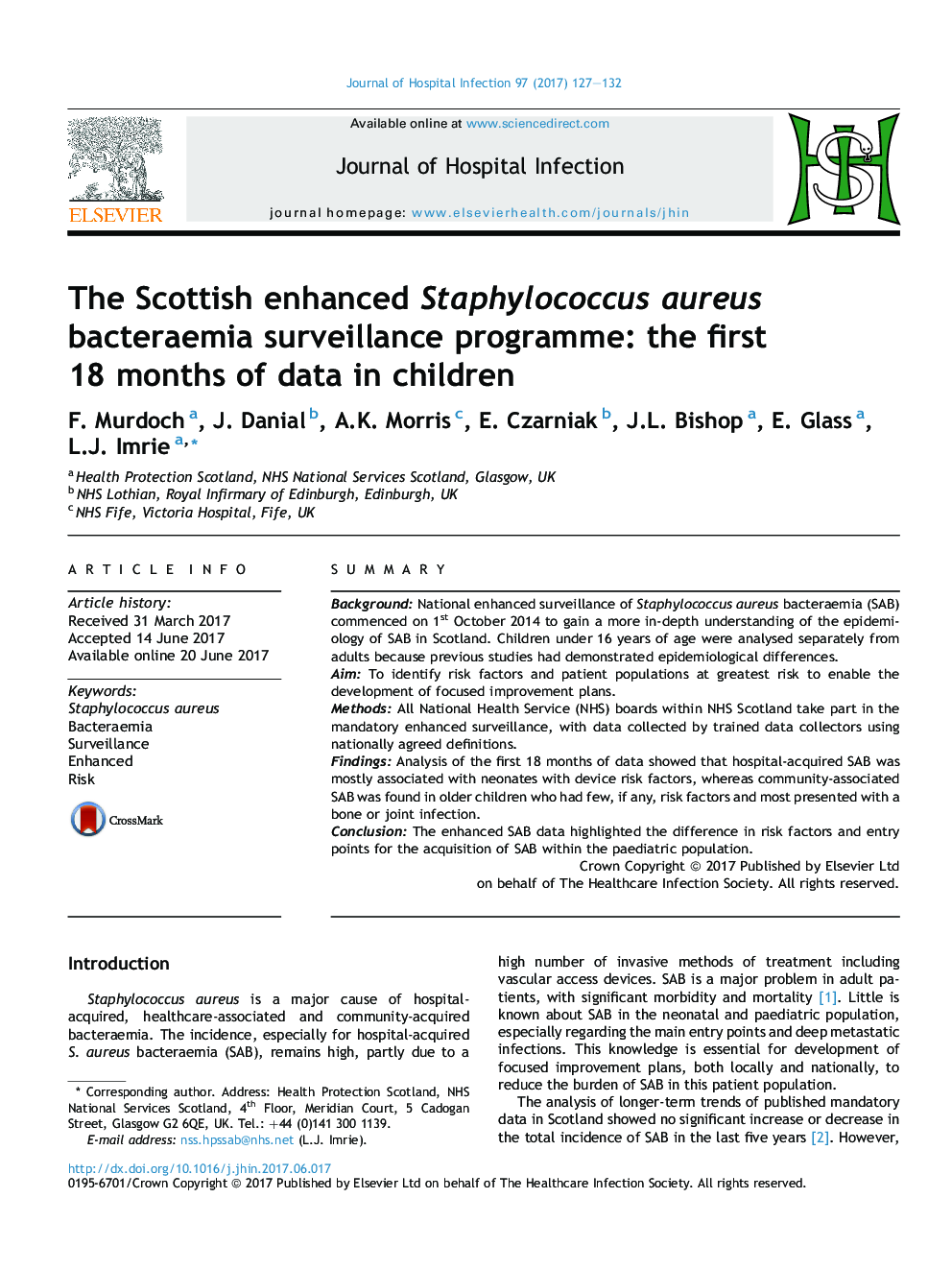| کد مقاله | کد نشریه | سال انتشار | مقاله انگلیسی | نسخه تمام متن |
|---|---|---|---|---|
| 5668240 | 1592395 | 2017 | 6 صفحه PDF | دانلود رایگان |
SummaryBackgroundNational enhanced surveillance of Staphylococcus aureus bacteraemia (SAB) commenced on 1st October 2014 to gain a more in-depth understanding of the epidemiology of SAB in Scotland. Children under 16Â years of age were analysed separately from adults because previous studies had demonstrated epidemiological differences.AimTo identify risk factors and patient populations at greatest risk to enable the development of focused improvement plans.MethodsAll National Health Service (NHS) boards within NHS Scotland take part in the mandatory enhanced surveillance, with data collected by trained data collectors using nationally agreed definitions.FindingsAnalysis of the first 18 months of data showed that hospital-acquired SAB was mostly associated with neonates with device risk factors, whereas community-associated SAB was found in older children who had few, if any, risk factors and most presented with a bone or joint infection.ConclusionThe enhanced SAB data highlighted the difference in risk factors and entry points for the acquisition of SAB within the paediatric population.
Journal: Journal of Hospital Infection - Volume 97, Issue 2, October 2017, Pages 127-132
